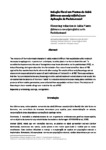Use este identificador para citar ou linkar para este item:
http://www.alice.cnptia.embrapa.br/alice/handle/doc/1016852Registro completo de metadados
| Campo DC | Valor | Idioma |
|---|---|---|
| dc.contributor.author | GUEDES, F. L. | pt_BR |
| dc.contributor.author | SILVA, N. L. da | pt_BR |
| dc.contributor.author | SOUZA, H. A. de | pt_BR |
| dc.contributor.author | ALMEIDA, B. K. da S. | pt_BR |
| dc.contributor.author | SOUZA, I. M. | pt_BR |
| dc.date.accessioned | 2015-06-02T11:11:11Z | pt_BR |
| dc.date.available | 2015-06-02T11:11:11Z | pt_BR |
| dc.date.created | 2015-06-02 | pt_BR |
| dc.date.issued | 2015 | pt_BR |
| dc.identifier.citation | In: SIMPÓSIO DE MUDANÇAS CLIMÁTICAS E DESERTIFICAÇÃO NO SEMIÁRIDO BRASILEIRO, 4., 2015, Petrolina. Experiências e oportunidades para o desenvolvimento. Petrolina : Embrapa Semiárido, 2015. 6 f. | pt_BR |
| dc.identifier.uri | http://www.alice.cnptia.embrapa.br/alice/handle/doc/1016852 | pt_BR |
| dc.description | [Flowering induction in sabia plants (Mimosa caesalpiniifolia) with paclobutrazol]. Abstract: The presence of thorns dominant character in sabiá, makes it difficult their exploitation which makes it necessary to apply genetic improvement techniques, to select plants that do not show this trait. To expedite the improvement, the use of bioregulators may be an alternative, as the paclobutrazol (PBZ), to induce flowering, aiming to reduce the time for selection. Four doses It was tested four doses of PBZ applied for five months from the fourth month after sowing. The results of four early flowering plants at eleven months were obtained in seasons 5 and 6 with doses of 1 ml and 2 ml of PBZ. There was evidence that the PBZ contributed to the early flowering since the control treatment did not show similar results. We concluded that the absence of thorns on ?sabiá? is a recessive character because many plants exhibited the presence of thorns after germination, even collected from a population without thorns. The induction of flowering at eleven months of age was related to the use of PBZ. | pt_BR |
| dc.language.iso | por | pt_BR |
| dc.rights | openAccess | pt_BR |
| dc.subject | Biorreguladores | pt_BR |
| dc.title | Indução floral em plantas de sabiá (Mimosa caesalpiniifolia) com aplicação de paclobutrazol. | pt_BR |
| dc.type | Artigo em anais e proceedings | pt_BR |
| dc.date.updated | 2016-03-11T11:11:11Z | pt_BR |
| dc.subject.thesagro | Sabiá | pt_BR |
| dc.subject.thesagro | Melhoramento genético vegetal | pt_BR |
| dc.subject.thesagro | Mimosa caesalpiniaefolia | pt_BR |
| dc.subject.thesagro | Caatinga | pt_BR |
| dc.subject.thesagro | Regulador de crescimento | pt_BR |
| dc.subject.thesagro | Floração | pt_BR |
| dc.subject.thesagro | Acúleo | pt_BR |
| dc.subject.nalthesaurus | Plant growth substances | pt_BR |
| dc.subject.nalthesaurus | Breeding | pt_BR |
| dc.subject.nalthesaurus | Paclobutrazol | pt_BR |
| dc.subject.nalthesaurus | Mimosa caesalpiniifolia | pt_BR |
| riaa.ainfo.id | 1016852 | pt_BR |
| riaa.ainfo.lastupdate | 2016-03-11 | pt_BR |
| dc.contributor.institution | FERNANDO LISBOA GUEDES, CNPC; NILZEMARY LIMA DA SILVA, CNPC; HENRIQUE ANTUNES DE SOUZA, CNPC; Brena Kelly da Silva Almeida; Ivanderlete Marques Souza. | pt_BR |
| Aparece nas coleções: | Artigo em anais de congresso (CNPC)  | |
Arquivos associados a este item:
| Arquivo | Descrição | Tamanho | Formato | |
|---|---|---|---|---|
| cnpc2015Inducao.pdf | 369,05 kB | Adobe PDF |  Visualizar/Abrir |









